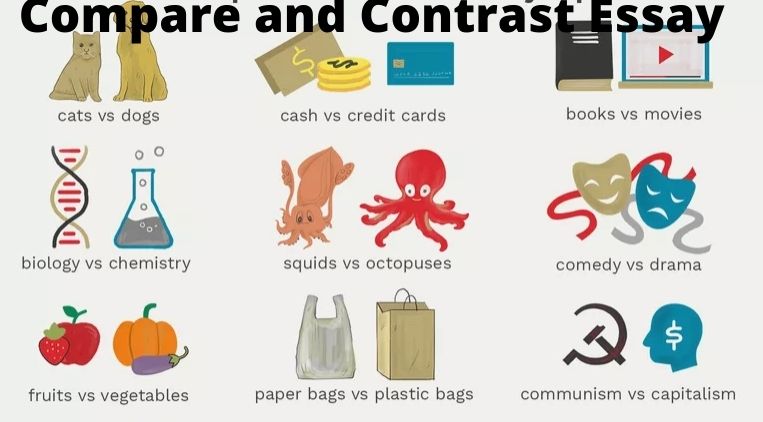A compare a contrast essay is a typical assignment for college students to evaluate differences and similarities between two objects.
This essay allows one to compare and contrast two objects like novels and enables the reader to make an informed choice concerning the two.
How to Write a Compare and Contrast Essay
A compare and contrast essay should offer a comparison between two objects. Such an essay will indicate how particular subjects could be similar in certain respects and vary in others. In addition, it examines the topic from different viewpoints.
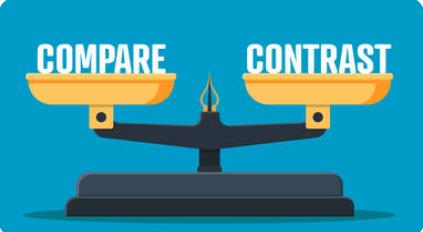
Besides, this kind of essay will teach students the analytical writing process as it prepares them for other advanced academic writing methods.
The cool thing is such essays are effortless to write when you follow the proper steps.
Such an essay intends to compare two objects within the same paper.
For that reason, you must ensure that the thesis statement, descriptive details, and topical sentences cover both objects.
How to Structure a Compare and Contrast Essay
The author can use the following steps when writing a compare-and-contrast essay:
1. Select your Subject Line
While writing this type of essay, ensure that the two subjects are different but in the same ballpark to make it meaningful.
For example, if you are writing about two historical figures, you can make it more sensible by writing about two great scientists rather than politicians and scientists. Another meaningful topic could be extroverts and introverts.
2. Use Venn Diagram
One can use the Venn diagram to demonstrate high-level analysis, which implies that one must brainstorm before writing.
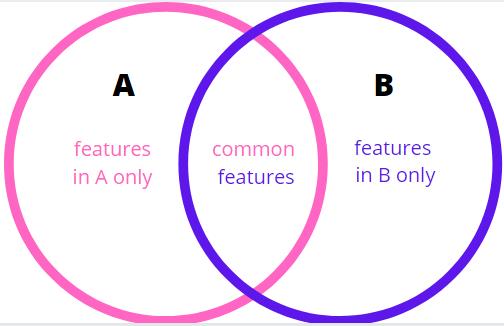
Such a Venn diagram is usually a set of overlapping circles, one showing the properties of the first subject while the rest indicates the characteristics of the second subject.
Any overlapping section represents the shared characteristics of both subjects.
Alternatively, you can opt to focus on each subject line at a time.
You can write all the characteristics of one object on a single sheet of paper and do so for the following objects on a separate sheet. Such makes one structure a moving argument.
3. Decide on Organization Structure
Several approaches exist in structuring a compare and contrast essay. One can opt to write about a single subject in detail before switching to the next.
For example, when you are comparing and contrasting extroverts and introverts, write good qualities about extroverts and some that you share with introverts. In the next section, you can focus on introverts.
Another approach is to go by point throughout your essay. Your sentence could read as follows: The introvert’s and extroverts’ brains are alike as both could perform better when valued and appreciated.”
4. Develop a Thesis Statement
Once the writer maps the differences and similarities between the topics, it is easy to appreciate the relationship between the subjects.
The prewriting process simplifies how you can develop a thesis statement and topical sentences. The thesis statements function as the roadmap to your essay.
5. Create an Outline
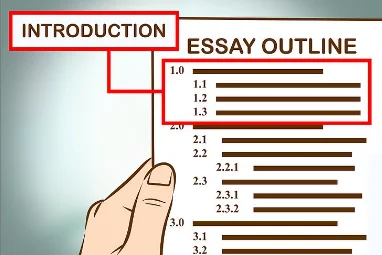
Once you gather the correct facts, you can move a notch higher by creating an outline.
The best standard to write a compare and contrast essay is by using the standard format.
That is, there should be an introduction and body paragraph, plus the conclusion. You can strike well if you remain faithful to that outline to make it tight and focused.
6. Write an Introduction
You can make your catchy introduction by spicing it up with the right tone to capture the essay’s contents. The author can make the introduction begin with a hook-like bold statement or a rhetorical question.
After you how, then introduce all the subjects that you will be examining in the essay. Ensure that the thesis statements come at the end of the introduction.
7. Develop the First Body Paragraph
Write the topical sentence which captures the area of comparison between the first and second subjects. For example, if the subject is between two different and the paragraph topic is about the political structure, you can begin by detailing each kingdom’s political process.
Additionally, the author can dedicate at least two sentences to talk about the similarities in the political organizations and how different the two are.
8. Repeat the Process
Follow the same process as the previous ones in the preceding paragraphs. The excellent news is comparative essays take their subject via different points of comparison.
One can plan to write at least three body paragraphs to handle the two subjects from all angles. The writer needs to link the paragraphs using transition words.
9. Conclusion
Ensure you create a fantastic conclusion to summarize the contents of the compare and contrast essay. Doing so allows you to have a proven thesis that details how two objects are unique and alike.
Let your concluding paragraph help you share your final thoughts and insights as you reinforce the thesis of your paper. Avoid introducing new information in the concluding paragraph.
10. Proofread
Your essay will be incomplete if you fail to proofread it. Please read it carefully to understand the flow and how you articulated your points when discussing the similarities and differences between the two subjects.
Check overall clarity by finding out the grammatical errors and mistakes and correct them. Check the punctuation and ensure that your spellings are what you intended to use.
Compare and Contrast Essay Outline or Template
If you are making a point-by-point arrangement, then the outline is usually as follows:
1. Introduction

- Essay topic: Put your specific topic and subjects with other items to compare /contrast
- Purpose: Indicate the purpose by discussing the similarities between C and D or analyzing the differences between C and D.
- Significance: Include it to enrich your introduction.
- Thesis statement: Let it be specific to introduce a strong argument for your outline.
2. Paragraph One
The first point/Topical sentence adds up as an analysis of feature 1.
- Object A: How important is feature 1 in A.
- Object B: How relevant is feature 1 in B.
- Explanation: provide clear comparisons.
- Concluding sentence: Restate the discussed idea.
3. Paragraph Two
The second point/Topical sentence adds up as an analysis of feature 2.
- Object A: How important is feature 2 in A.
- Object B: How significant is feature 2 in B.
- Explanation: Provide clear comparisons.
- Concluding sentence: Restate the discussed idea.
4. Paragraph Three
Third point/Topical sentence, which is an analysis of feature 3
- Object A: How important is feature 3 in A?
- Object B: How important is feature 3 in B?
- Explanation: provide clear comparisons.
- Concluding sentence: Restate the discussed idea.
When writing some of these sentences, you may find a need to define some words within the essay. Read our guide on how to define words in a paragraph to understand how to insert such.
5. Conclusion
- Summarize the topic
- State the importance of the subject
- Give a brief evaluation of future developments
Alternatively, you can use block arrangements if the compared objects are difficult to analyze. Here, you analyze all chosen features as detailed in the below format.
Paragraph 1: Object A
- Feature 1
- Feature 2
- Feature 3
Paragraph 2: Object B
- Feature 1
- Feature 2
- Feature 3
N/B: In all cases, begin each paragraph with a topical sentence.
Conclusion
Let the conclusion repeat your thesis statement but discuss the importance of the outcome of your contrasting analysis.
Comparison and Contrast Essay Paragraphs
One has the freedom to write a compare-and-contrast essay in different ways depending on the structure.
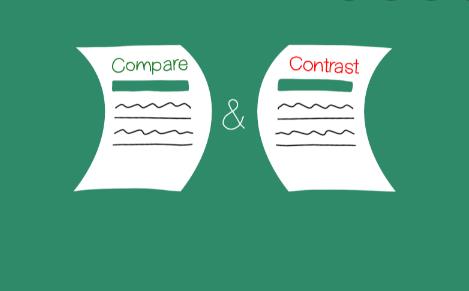
One standard is the author has differences and similarities to discuss.
You can choose to mention similarities in comparison paragraphs as you indicate the differences in contrast paragraphs.
Make the sentences readable by using transitional words such as however, even so, and more.
How to Compare Paragraphs
One can explore the similarities of the items in a discussion by comparing them according to specific criteria. You will need to get definitions of some words in doing this. And one way is using a dictionary for words.
Once you use a dictionary to get the meaning of a word, you can pass this information to the reader. Read how to define words in an essay and learn the way to bring such meanings to the attention of the reader.
For example, if you are analyzing two mobile phones, you begin by understanding what is similar between the two models. They could be using a similar OS and other features.
How to contrast paragraphs
The argument in this section revolves around how the two items differ. Using the same smartphone example, mention if they use different OS platforms and offer an argument that suits specific needs.
Still, suppose any of the two has onboard memory; explain how the difference can enhance user experience or impact the functionality.
Frequently Asked Questions
How do you begin an essay introduction?
Begin by offering background information in the context. In addition, you should limit the scope of discussion as you state your intention or position over the subject matter. Let this introduction outline your main points, which is an overview of your main arguments.
How many paragraphs can a writer use to compare and contrast?
The suitable standard is to focus on writing at least two to three paragraphs to tackle the subjects from all angles. Such comparative essays have several points of comparison on specific subjects.
How do you use contrast words in your essay?
The meaning of contrast is the opposite. For example, white could be the opposite of black. In our case, the contrast could become real if two objects are different. However, some of the transition words that you can use when expressing contrast are nevertheless or instead.

Joseph is a freelance journalist and a part-time writer with a particular interest in the gig economy. He writes about schooling, college life, and changing trends in education. When not writing, Joseph is hiking or playing chess.
